Top Fleet Management Software for Smarter Fleet Control


If you’ve ever managed a fleet, you know it’s never simple. One driver is stuck in traffic, another vehicle is overdue for service, and fuel costs keep eating into your budget. Add demanding customers to the mix and it can feel like you’re always one step behind. Many businesses still try to keep up with spreadsheets and phone calls, but that approach only works until something goes wrong.
A modern fleet management platform takes the guesswork out by putting all the important details in one place. You can see where vehicles are, plan routes more efficiently, and fix problems before they turn into losses. In this guide, we’ll explain how this software works and highlight the solutions that truly make a difference in 2025.
What Is Fleet Management Software and How It Works
For anyone running a fleet, information overload is a daily struggle. Where are the vehicles right now? Which ones need servicing soon? How much fuel is being wasted in traffic? Trying to answer these questions with phone calls and spreadsheets is stressful and often unreliable. Modern software solves this by pulling everything into one clear dashboard. Managers can follow routes in real time, schedule maintenance before breakdowns happen, and track driver performance without chasing reports. It’s no surprise the fleet management software market has been growing fast, valued at more than 28 billion dollars in 2024. Companies are investing because the payoff is clear: fewer surprises, lower costs, and smoother operations that keep customers satisfied.
Fleet Management Softwares: What to Look for Before Choosing
Choosing software for a fleet often starts with the same frustration: too many options that look identical at first glance. Managers scroll through endless product pages and still feel unsure which tool will actually solve their problems. The best way to narrow it down is to focus on what matters in daily work. Start with the features. If your biggest headache is lost time in traffic, route planning tools are essential. If breakdowns cost you money, maintenance reminders will save the day. Next, check the pricing carefully. Some systems bill per vehicle, others per user, and small print can change the final number more than expected. Finally, think about where your business is heading. A system that handles ten vehicles may not keep up with fifty. Comparing several fleet management softwares and their solutions side by side makes it easier to spot the right fit.
Mobion
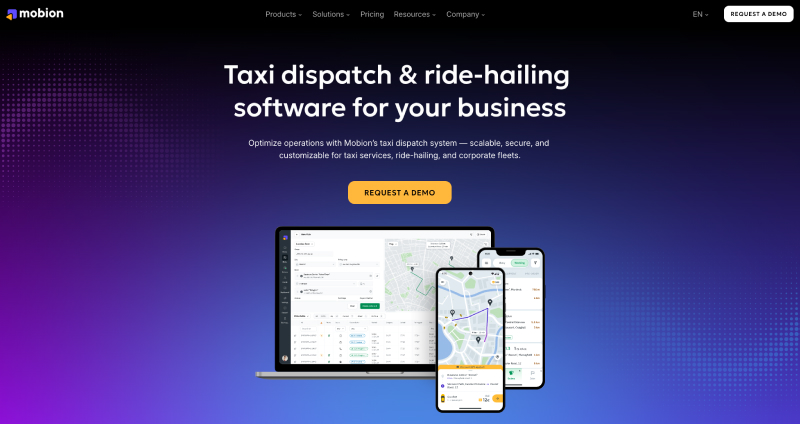
Mobion is a fresh entrant in the online fleet management software space, built with a focus on clarity and ease of use. While many platforms were designed years ago and later adapted for modern needs, Mobion was created from the start with today’s fleets in mind. That gives it an advantage: a cleaner interface, faster onboarding, and a product that evolves quickly with customer feedback.
Where Mobion shines is in helping a small business take control of its vehicles without hiring a full IT team. Setup is straightforward, and most companies can start tracking and managing their fleets within days, not weeks. The platform covers essentials like GPS tracking, route planning, and maintenance scheduling, while adding extras such as driver performance monitoring and fuel reports.
Growth numbers in the fleet tech industry show that businesses are actively looking for tools that are lightweight but reliable. Mobion fits this demand well. Customers highlight the responsive support and the way the product avoids unnecessary complexity. For smaller operators, it means less time learning a system and more time running the business. For larger teams, it offers scalability without forcing them into rigid enterprise contracts.
Mobion is young, but its momentum speaks to a clear truth: companies are ready to embrace solutions that are simple, flexible, and built for the future.
Motive
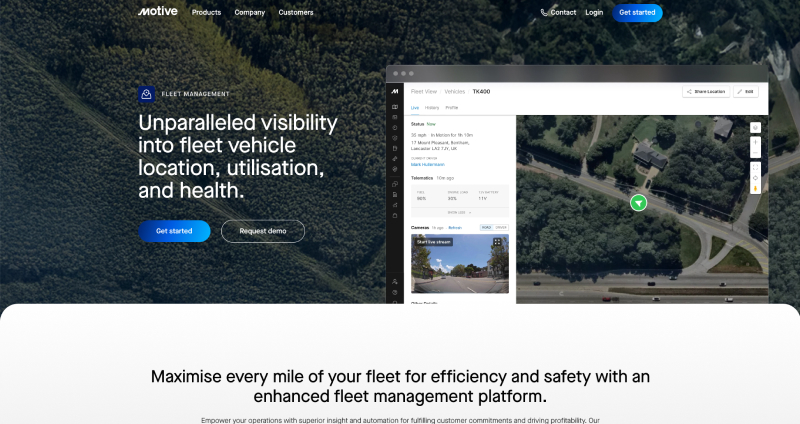
Motive, earlier known as KeepTruckin, started with a simple idea: help trucking companies stay compliant. It quickly expanded and is now one of the most visible names in fleet vehicle management software.
The platform covers everyday needs like GPS tracking, fuel reports, and maintenance reminders. On top of that, it adds tools that focus on safety. Many fleets highlight the AI dashcams that flag risky driving and provide real feedback to drivers. For companies dealing with tight margins, fewer accidents also mean lower insurance and repair costs.
Today Motive works with more than 120,000 customers across North America. Small fleets appreciate how easy it is to set up, while larger carriers use the advanced analytics. That balance between simplicity and depth is the reason Motive keeps growing.
Samsara
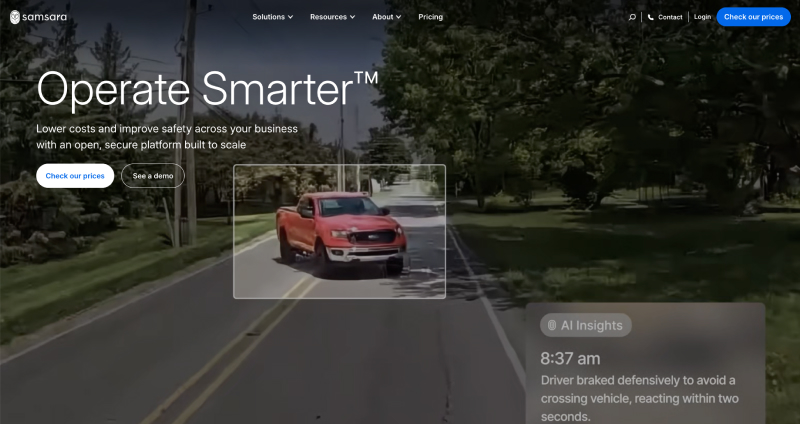
Samsara was founded in 2015 in San Francisco. In just a few years it went from a small startup to one of the most talked-about names in fleet service management software. The idea was simple: give fleet operators real-time visibility without drowning them in complicated systems.
The platform offers GPS tracking and dashcams, but customers often point to the reporting tools as the real value. Being able to spot fuel waste or unsafe driving patterns in minutes helps managers act before problems get expensive. Drivers like the mobile app too since it’s straightforward and doesn’t slow them down.
Today Samsara works with more than 20,000 customers worldwide. From courier services to large logistics companies, many use it as a modern alternative to outdated legacy tools.
Verizon Connect
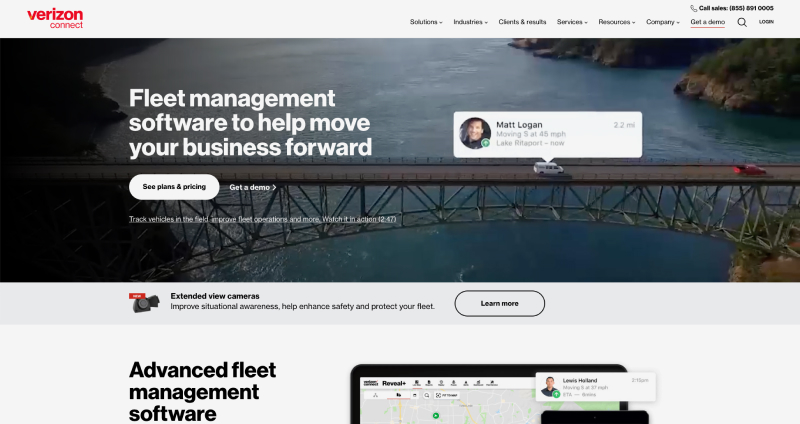
Verizon Connect is one of the bigger names in the industry, backed by Verizon’s long history in telecom. Instead of building a flashy product, the team focused on practical tools that fleets use every day. That’s why many companies see it as a solid choice for custom fleet management software.
At its core, the platform gives managers visibility. You can check where each vehicle is at the moment, review trip history, and set alerts if something unusual happens. Larger fleets often use the reporting tools to catch patterns, like recurring delays or high idle time, and adjust before the costs pile up.
Some users say the system feels more enterprise-oriented, but others value the stability that comes with a big provider. For many, it’s about trust and scale.
Geotab
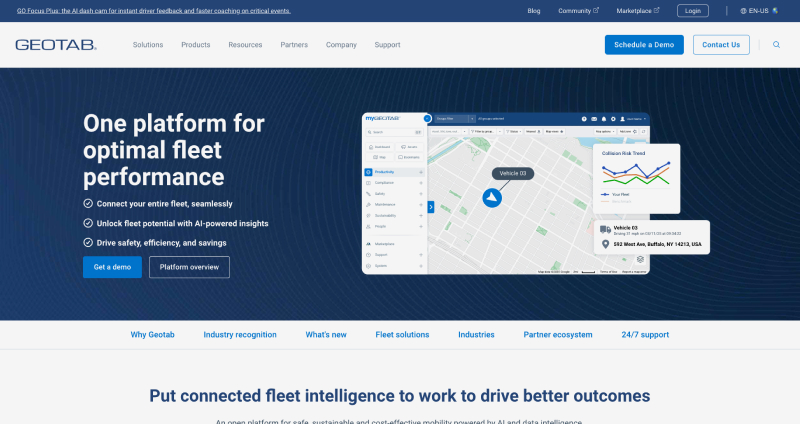
Geotab has been part of the fleet world for more than twenty years. It started in Canada, selling simple tracking devices, and slowly grew into a global player. That history matters because it shows how much the company invested in reliability rather than quick wins. Today it is known as one of the most established names in software for fleet management.
The platform goes beyond location tracking. Fleets use it to check vehicle health, monitor fuel spend, and understand driver habits. The amount of data can feel overwhelming at first, but many managers say it pays off once you start seeing patterns that explain real costs.
One more thing: Geotab’s marketplace of add-ons. It lets companies bolt on extra apps, making the system flexible enough for industries from delivery to public transit. That adaptability is why more than 40,000 businesses still stick with it.
Fleet Management Tools: Final Thoughts for Your Business
Running a fleet has never been simple. Every mile brings questions about cost, safety, and efficiency. That’s why technology now plays such a central role.
Looking across the leading fleet management tools, the pattern is clear. The established providers deliver depth and reliability, but sometimes feel heavy for smaller teams. Newer platforms focus on speed, clarity, and user experience. Both approaches matter, yet the real opportunity lies in combining the best of them.
Mobion represents that shift. It is young, but already shows how a modern system can be powerful without being overwhelming. Designed for managers who want practical insights instead of endless menus, it offers a way to control fleets while leaving room for growth.
If you’re curious about where the industry is heading, the next step is simple: Request Mobion demo . Trying it for yourself is the best way to see how future-ready fleet management feels today.
F.A.Q.
Ready to revolutionize your taxi business?
Choose what you need: